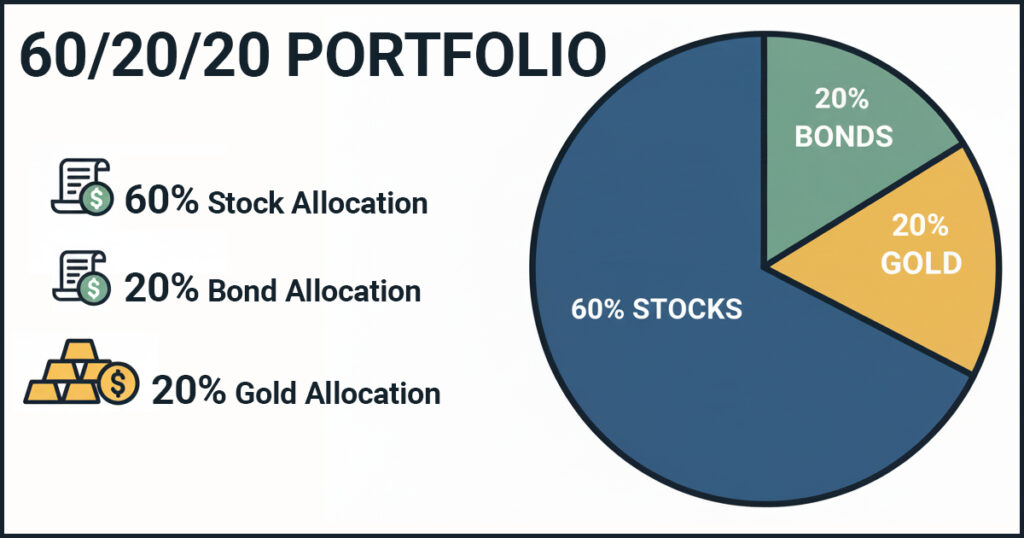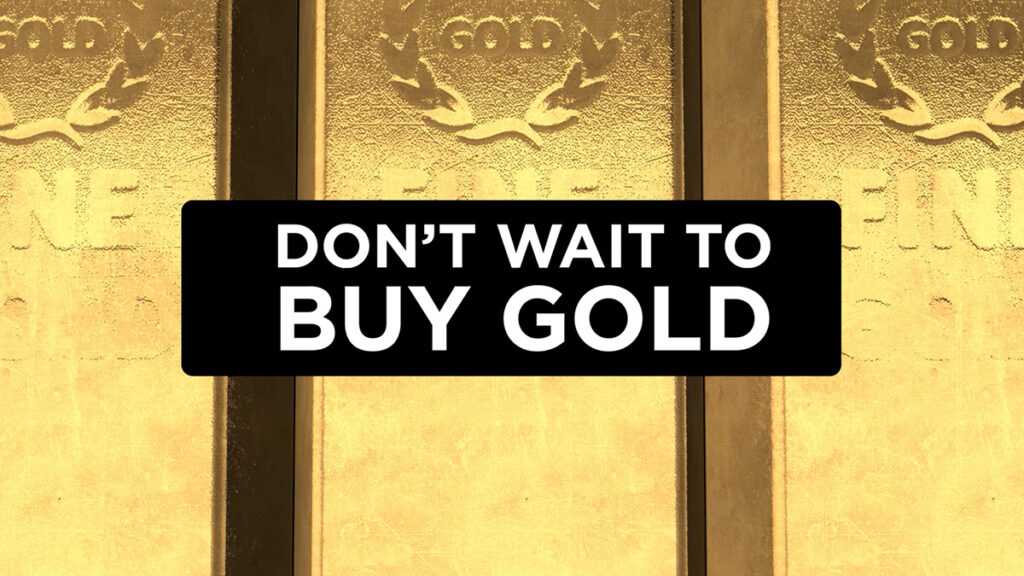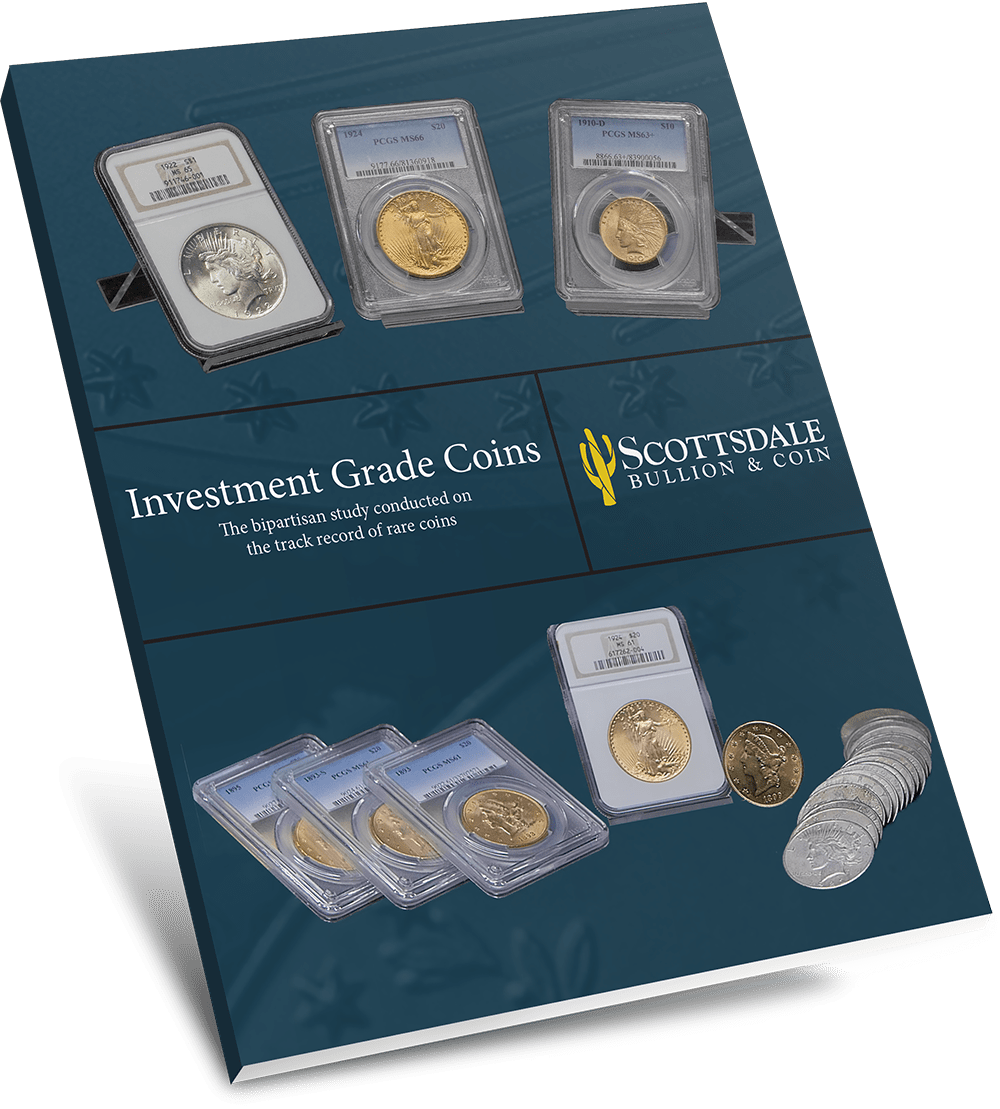The investing world is undergoing a seismic shift. Precious metals are hitting record highs after years of steady growth, while major financial institutions are turning away from traditional safe havens like bonds. The market’s definition of “safety” is being rewritten, and gold is quickly emerging as the new cornerstone of investment portfolio protection.
In this week’s The Gold Spot, Scottsdale Bullion & Coin’s Precious Metals Advisors Todd Graf and Joe Elkjer discuss the end of the traditional 60/40 investing rule, how Wall Street is embracing gold as a foundation of portfolio allocation, and where gold and silver prices could be headed following record peaks.
The Death of the Traditional 60/40 Rule?
Since the 1950s, Americans have been guided by the 60/40 rule when balancing their investment portfolios. This cornerstone of traditional investing advises holding 60% in stocks and 40% in bonds. Financial advisors have always recommended slight adjustments based on specific variables, such as age, income, and risk tolerance, but the 60/40 principle remained the principal framework for portfolio allocation.
This approach aims to gain exposure to growth-oriented assets — stock indices and individual company shares — while hedging with a safe-haven instrument — US bonds. This best-of-both-worlds strategy is intended to help investors successfully navigate the ups and downs of market uncertainty and volatility. While stocks continue fulfilling their end of the 60/40 bargain with ongoing record highs, the bond market is quickly losing its safe-haven appeal.
The Fledgling Bond Market
The Bloomberg US Aggregate Bond Index — the benchmark for tracking the bond market — has fallen by more than 6% since the beginning of the year, signaling weaker demand and lower yields. This broad and sustained weakness has tarnished the US bond market’s reputation, even forcing all three major credit rating agencies to revoke the country’s perfect credit rating.
After decades as the gold standard of portfolio design, the 60/40 split is now under fire as investors look for stronger protection as bonds fail to provide security. With warnings of stagflation rising, US Treasuries no longer offer the peace of mind they once did, forcing people to turn to more promising alternatives.
“Bonds are losing their safe-haven status. Stocks and bonds aren't set up to protect you against stagflation, which a lot of economists are expecting.”
How Much Gold Should You Own?
More than just murmurs among retail investors, the death of the 60/40 split is now being declared from the pulpits of Wall Street’s most prominent institutions. The replacement? A 60/20/20 model.

This modern reimagining of the traditional 60/40 investing split allocates 60% to stocks for growth, leaves 20% in bonds, and dedicates 20% to gold for optimal protection against inflation, currency weakness, and market volatility.
This approach reduces dependence on bonds—which have lost much of their reputation as reliable protectors of wealth—and introduces an asset that consistently preserves value when traditional markets come under pressure. In essence, the 60/20/20 investment portfolio model spreads risk more evenly across growth, income, and enduring value.
Wall Street & Big Banks Embrace 60/20/20 Allocation
Morgan Stanley’s Chief Investment Officer, Mike Wilson, recently urged investors to rethink the classic mix, suggesting a 60/20/20 allocation as a stronger hedge against inflation. Wilson even went a step further, calling gold the “anti-fragile asset to own” over US Treasuries, framing the yellow precious metal as one of the best defenses in today’s volatile environment.
Famed investor Peter Schiff echoed those calls, urging investors to dump US bonds to achieve the 60/20/20 mix. While not mirroring precisely identical ratios, BlackRock CEO Larry Fink reinforces this foundational shift from traditional portfolio allocation, encouraging a 50/30/20 model. Bank of America also recommends 40% in gold as bonds buckle.
How Much Gold Wall Street Heavyweights Recommend You Hold:
| Investor/Firm | Gold Allocation % |
|---|---|
| Jim Cramer | 10%1 |
| Ray Dalio | ~15% |
| Morgan Stanley | 20% |
| Peter Schiff | 20% |
| Jeffrey Gundlach | 25%2 |
| BofA | 40% |
Wall Street’s Bullish Projections
Wall Street isn’t just reducing bond exposure because they’re weak; it’s because gold is strong. The precious metal’s record-breaking run has triggered a wave of bullish forecasts from some of the biggest names in finance. What was once considered a contrarian bet has quickly become a consensus call for higher prices.
At current levels, experts think gold isn’t even expensive. Here’s where they’re suggesting prices could go:
- UBS: $4,200/oz
- J.P. Morgan: $4,250/oz
- BMO Capital Markets: $4,400/oz
- Goldman Sachs: $4,900/oz
- James Luke, Schroders: $5,000/oz
- State Street Global Advisors: $5,000/oz
- Chris Wood, Jefferies Global Head of Equity Strategy: $6,600/oz
- Michael Hartnett, Chief Investment Strategist at BofA Merrill Lynch: $6,000/oz
- Bart Melek, managing director and global head of commodity strategy at TD Securities, expects $4,400/oz by Q2 2026, with a potential run to $6,000-$7,000/oz.
- Frank Holmes, CEO U.S. Global Investors & Forbes Contributor: $7,000/oz
Physical Gold Over Paper Gold

As the great financial reshuffle sounds the death knell for the traditional 60/40 investment rule and the yellow precious metal swoops in as a trusted replacement, it’s worth considering the differences between paper and physical gold.
Paper gold options—such as gold ETFs and mining stocks—are popular entry points because of their convenience and liquidity. But without true ownership, they fail to deliver the full spectrum of gold’s advantages, leaving investors exposed to the same stock market volatility they were trying to escape.
On the other hand, physical gold, in the form of gold bars and coins, represents the purest expression of wealth preservation. These tangible assets stand outside the financial system, shielding your portfolio from counterparty risk, offering ultimate privacy from prying eyes, and insulating your wealth with inherent value.
The physical market is the absolute best way to take advantage of this performance.–
Buy Gold & Wait, Don’t Wait to Buy Gold.

This week, both gold and silver prices broke into uncharted territory. Gold surged past $4,000/oz, while silver shattered its long-standing ceiling above $50 per ounce. Far from signaling a peak, the moves point to even greater upside ahead.
Wall Street is turning bullish, with major institutions now calling for investors to treat gold as a cornerstone holding. Meanwhile, central banks are buying gold at record rates while offloading US dollars and Treasury bonds, a clear vote of no confidence in traditional safe havens.
We’re already seeing clients who hesitated at $2,000/oz now jumping in at much higher levels. Don’t make the same mistake. The old adage holds true: it’s better to buy gold and wait than to wait and buy gold.
“You don't want to be behind with gold and silver. They're moving quickly.”
If you’d like to learn how to begin investing in the bedrock of investment protection, grab a FREE copy of our Gold & Silver Coins Report.

Get more out of your gold & silver investments. Read our free, data-backed investment report now.
Get Free Report
Question or Comments?
If you have any questions about today’s topics or want to see us discuss something specific in a future The Gold Spot episode, please add them here.
Comment



 SUGGESTED READING
SUGGESTED READING
Questions or Comments?
"*" indicates required fields